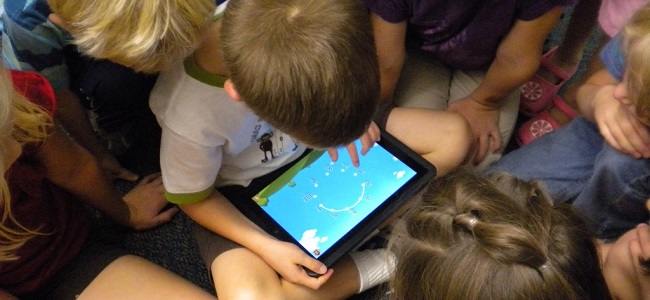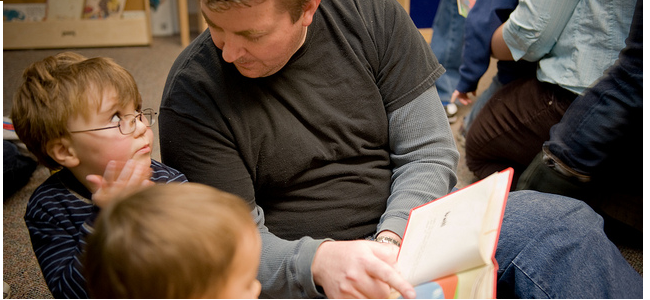A lot of pupils are going to be enthused by STEM (science, technology, engineering and mathematics) subjects, and plenty of teachers like to run clubs around them. STEMNET’s Lisa Thompson gives her top tips on how to get a great STEM club running.

Many teachers would love to run an after school club with a handful of enthusiastic students where they get to explore all the fun things they just don’t have time for in the curriculum. The problem is many teachers just don’t know where to start. There is a dizzying array of enrichment opportunities with relatively low uptake from schools because many teachers are just too busy to engage with them, or never even hear about them in the first place! So here are my top tips for setting up a club and maintaining it throughout the year:
Different teachers have different ideas when it comes to innovation in education. Here, The Learning Machine’s Ian Lynch explains why he feels schools need to be careful not to get carried away with technology.

Modern edtech advancements are getting lots of use in STEM subjects, as well as the likes of English and the performing arts, but how is PE getting the most out of this technology? Brian Bennett, a teacher turned academic customer solutions engineer at TechSmith, discusses how video tutorials are being used alongside the whistle.

Keeping students engaged during lesson time is one of the greatest and oldest challenges for any educator. To boost student motivation and engagement, teaching methods are having to evolve and move away from traditional approaches within the classroom. One notable development has been the introduction of technology. Most subjects are incorporating digital resources in order to harness young people’s interest in technology. For example, physical education classes are incorporating mobile technology as a means of improving class involvement and enthusiasm.
When a teacher has so much on their plate, it can be easy to get tunnel vision. It’s important to be aware of the best teaching and learning options out there; here, London-based blogger Helen Willis takes a look at how teachers can help pupils truly soar.

It’s fairly common for old-school educators and administrators to unplug the Internet and shun new technology. Some still see tablets, laptops and remote Internet access as a distraction that should be fought; they believe that there’s no replacement for books, pens and pads. However, these learning institutions have, quite simply, got it wrong.
How can teachers use games to teach complex issues? New Jersey social studies teacher Matthew Farber discusses how the latest games can be used to help students learn about the principles of ethics.

Game designers use cause and effect loops to reward players when they advance in a game. Conversely, penalties exist if a task is a mission is failed. For example, when Batman defeats thugs in an Arkham game, the player -- who takes agency over the character -- may earn a digital badge or a power up. The “fail state” is a setback penalty to the most recent save point. Designers use causal loops with the intention of affecting player behavior; intrinsic satisfaction is typically rewarded right away. Of course, decisions in real life are much harder to define.
The science lab is an exciting place for students, so why not make the most of this with the latest edtech on the market? Primary education specialist Maggie Morrissey advises teachers how best to make science classes as lively as possible.
[As seen in the February 2014 edition of our magazine]

Throughout my teaching career I have enjoyed using technology in education, especially in science lessons. As an ICT coordinator I introduced teachers, teaching assistants and children to a variety of digital resources such as data loggers, digital microscopes and simulations to help support the teaching of science.
A student with learning difficulties has to get through a lot of hard work each time, so it’s important that their teacher is properly equipped to guide and encourage their progress. Therapy Box director Rebecca Bright, herself a speech & language therapist, gives her advice on the best SEN tech available.

We’re often asked, when we run workshops and training sessions for speech therapists, how they can utilise iPads and Android tablets in the classroom alongside students with learning disabilities. Of course, the answer is as broad as the range of students – with a plethora of tools and apps which can be considered by speech therapists and teachers.
Edtech is a truly exciting place, giving brilliant opportunities to teachers and pupils both. Charlie Harrington, Co-head of Knewton’s London office, examines how technology is fundamentally changing the way we learn

While we might not be able to teleport yet, technology has touched almost every part of our lives – from the way we shop, communicate with loved ones, listen to music, search for information, and more. Now technology is making waves in the education sector. Since January, edtech start-ups have raised more than half a billion dollars to fund the “next generation of education”.
Teachers who have been entrenched in their classes for years still seek out innovative edtech to assist their work. Educators moving to a new environment, therefore, are likely to want to know about what’s available for their specific needs so that they can get a running start. Hot on the heels of his Media teacher’s iPad piece, Mike Gunn discusses the best technology for supporting new teachers.

Being a new teacher can be daunting. To be honest, even when you've taught for many years, a move to a new school can make you feel almost entirely like a beginner again. The nature of teacher is that students listen when they respect you, and rarely before that point. Your job as the teacher is to establish high expectations, behaviour boundaries, and what I used to call ‘the deal’: "You guys work hard, and I'll make your learning worthwhile and engaging".
After Rory Gallagher’s recent piece on the meaning of education-innovation, Nicole Ponsford looks at the current state of affairs between schools and suppliers, and how both parties can work together for exciting progress.

With a background in marketing preceding my time in schools, I find this question of great interest. Schools and business are in the marketing game – schools to illustrate and celebrate the hard work and success of students and teachers alike, businesses to illustrate how innovative they also are, and to make a profit. As a former multimedia teacher, I have always been keen to provide my secondary school students with ‘industry-standard’ software and hardware. I want to prepare them for the world of business. However, working with technological giants like Apple, Sony and Vodafone, I have learnt a little about who is leading this innovation in terms of produce use – teachers or suppliers? Who is making the first move, and is this more about products or partnership?

A community-driven platform for showcasing the latest innovations and voices in schools
Pioneer House
North Road
Ellesmere Port
CH65 1AD
United Kingdom